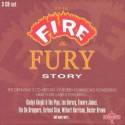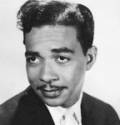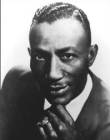Fire And Fury - An Independent Tale
|
| ||||
|
|
| |||
|
| |||
|
Robinson has justifiably been cited as one of the first black record label owners and certainly the only one in Harlem at the time. He also had the additional ability to write and produce his own records. He originally specialised in black vocal groups and the Mello-Moods, the Rainbows and the Vocaleers were all part of Robinson's early roster and all had either national or local r&b hits. Ironically however, his first real hit was a solo effort (Champion Jack Dupree with 'Shake Baby Shake'). Like most labels, Robinson could also point to the ones that got away, losing the Chords 'Sh-Boom' to Atlantic despite auditioning the early versions of the song. After a brief sojourn with the Whirlin' Disc label (which itself produced the hit 'The Closer You Are' by the Channels) Robinson set up the Fury label and the Fire publishing company. Initially still group based, the label took a change of direction in 1959 with the release of Wilbert Harrison's 'Kansas City', a Little Willie Littlefield song he had been playing live for a number of years. Even then the label had trouble, a legal battle with Savoy ensued (they claimed Harrison was still under contract to them) and Robinson set up Fire Records to avoid any future Fury monies getting tied up in the legal proceedings.
Fire had hits with both Tarheel Slim and Buster Brown ('Fannie Mae') and was also home for bluesmen such as Elmore James, Lightnin' Hopkins and Arthur Crudup, who scored with the original 'That's All Right Mama'. Another pop hit also came its way with the release of Bobby Marchan's version of 'There Is Something On Your Mind'. In 1961 Robinson resurrected Fury as a label, recording Gladys Knight and The Pips and achieving further pop and r&b success with Lee Dorsey's 'Ya Ya' (which he co-wrote). He then started yet another label (Enjoy) which saw the release of King Curtis' 'Soul Twist', a number one hit in 1962. The Enjoy label continued to release records throughout the 60s, 70s and 80s. Bobby Robinson still has a record store in New York and continues to record the music he loves in Harlem. The golden days are behind him; although he was an astute businessman who tended to record artists on a song by song basis to avoid most of the legal tangles which befell others, he still suffered as the move to corporation based record production killed the market for independent labels. Robinson operated at a time when labels were set up at will, where financial irregularities were almost a prerequisite in the business and when label owners were constantly suing each other over the rights to artists recordings and the artists themselves - it was probably the most exciting if indisciplined era in popular music production. |
|
| |||
|
Lee Dorsey's first real career was as a moderately successful boxer in the 50s before joining the navy. He subsequently signed up for the Fury label and in 1961 he recorded 'Ya Ya' which was a number seven hit in the States pop charts. The following year he released a version of Earl King's 'Do Re Mi' and again managed a reasonable showing in the pop charts. Although there were three further releases on Fury, this proved to be his last hit record for three years, coinciding with the demise of the Fury label. In 1965, no longer with Robinson, he began a series of hits produced by Allen Toussaint, including 'Working In A Coalmine' and 'Holy Cow'. He went into semi retirement after the release of the "Yes We Can" album, was persuaded into performing again by The Clash in 1980 but died of emphysema in 1986 after fighting illness over the latter part of his life. Wilbert Harrison provided the Fury label with its first national hit - 'Kansas City' made the top of the charts in 1959, many years after Robinson had first started in the record business. Harrison had previously recorded for a number of other labels, including Savoy, never with much success. He made further recordings with Robinson, including the first version of 'Let's Stick Together', but further success eluded him. He continued to record throughout the 60s and 70s, producing several excellent albums, none of which gave him lasting commercial appeal. He continued to work until his death in 1994. Although he had been recording since 1954, it wasn't until 'There Is Something On Your Mind' in 1960 that Bobby Marchan finally scored the solo hit that had for so long eluded him, reaching number one on the R&B charts. A series of Fire singles followed in rapid succession, among them Booty Green', and 'Yes, It's Written All Over Your Face', but none earned much attention on the national charts. On the recommendation of Otis Redding he was signed to Stax Records in 1963 and moved on to Dial the following year. Sadly, after a long battle with cancer, Bobby died in 1999. The Rainbows are best remembered for their doo wop hit 'Mary Lee', originally released in 1954 - it was subsequently leased to Pilgrim who released it again in 1956, after which the group left Fury and joined Pilgrim on a full time basis. Their other claim to fame is the people who passed through their ranks during their many personnel changes; Marvin Gaye, Don Covay and Billy Stewart were all members of the group at some time. When 'Mary Lee' became popular with collectors in the early 60s, Robinson re-issued the song on his Fire label. Tarheel Slim (real name Alden Bunn) got his first break in 1947 when he started an eight year association with the Selah Jubilee Singers. It was during this time they also recorded as The Larks and released blues material such as 'Eyesight To The Blind'. Over the years he recorded in a variety of styles, first joining Bobby Robinson in 1953 and reuniting with him in 1958 to kick off the Fire label with the single 'It's Too Late', recorded with his wife Little Ann (Anna Lee Sandford). In the late 60s he disappeared from the music scene altogether but returned in the 70s, working until his death in 1977. |



Leave a comment